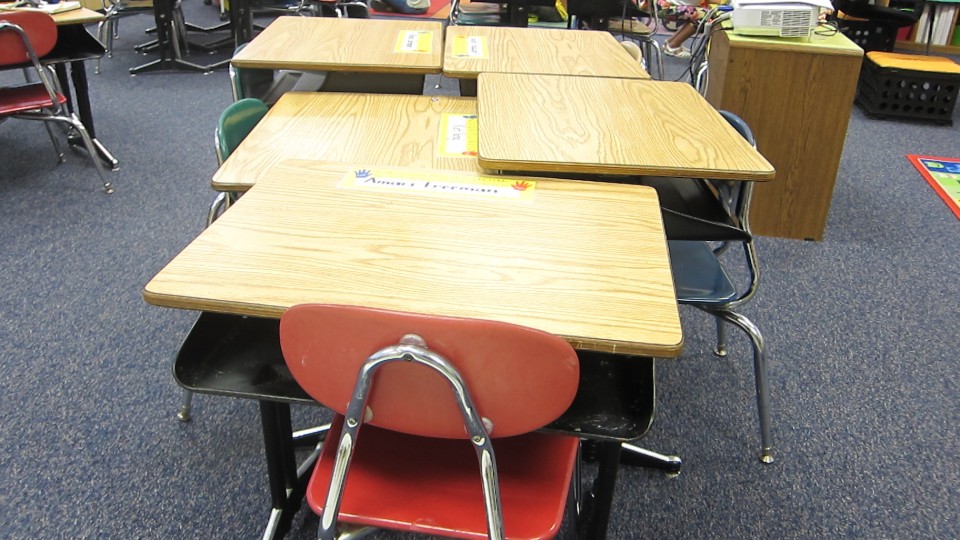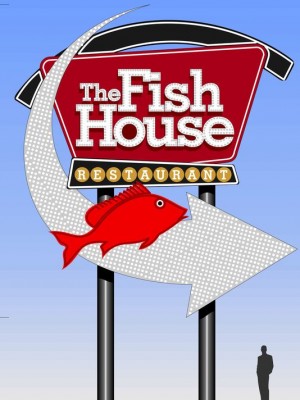The view beyond the Fish House sign
- December 9, 2015
- / Shannon Nickinson
- / community-dashboard

Desks in a kindergarten classroom at Oakcrest Elementary School. Shannon Nickinson/Studer Community Institute.
Looks are important, but they aren’t everything.
Appearances are especially important in the heart of Pensacola’s revitalized downtown area. The waterfront is an asset that in the post-industrial age has not been utilized to its full potential.
One of the important moments in turning that around was the opening of The Fish House. Collier Merrill’'s investment has paid off for him.
And for the City of Pensacola.
Now that it is time to upgrade the sign for what is one of the anchors of Pensacola’s foodie culture, some folks are worried about the view of historic Pensacola Bay being spoiled.
The Architectural Review Board’s raison d’etre is making sure things in the historic core of downtown have visual appeal that is consistent with the aesthetic of the neighborhood.
They are good folks, qualified in their fields, who care deeply about the visual continuity of the community — from the type of bricks and window frames to fence posts that fit the feel of the city core.
They are OK with the Fish House sign. So, it seems are Mayor Ashton Hayward III, city planning officials, the executive director of the UWF Historic Trust, even high-level neighbors and interested parties including Bobby Switzer, J im Cronley and Brian Spencer,
And yet, here we are, with a special meeting of the City Council to revisit the issue, because Bob Kerrigan is not happy with sign.
With all due respect, might I submit for your consideration something else that “spoil(s) the view of historic Pensacola Bay.”
You might not see these things if you look only from Muscogee Wharf toward the fresh seafood, live music and good grits at The Fish House.
But they are there.
Census tract 1, which covers most of downtown Pensacola, including the Community Maritime Park has 11.2 poverty rate among children.
Tract 3, just a little farther west, has a poverty rate for families with children of 15.1 percent.
In Tract 4, about a half-mile away from Muscogee Wharf and the Fish House’s sign, the poverty rate for families with children is 25.6 percent — and the median income is $14,836.
About 977 children ages 9 and under live in those three neighborhoods.
Merely because of the ZIP code they were born into, data suggests they are more likely to start school behind their peers, part of the 34 percent of Escambia's children who are not ready for kindergarten when school starts.
Some of them are likely to be two years behind when they start kindergarten next year — the academic equivalent of a 3-year-old.
When is the special City Council meeting to brainstorm ideas about how to get them better prepared for school?
Which councilmember or concerned citizen will call to have that placed on an agenda?
There are strategies in place in communities all over this country that work to improve early literacy, boosting a child’s chances at success in school — and life. The Thirty Million Words Initiative in Chicago. The work of the Children’s Services Council in St. Lucie County. Providence Talks. Generation Next in Minneapolis-St. Paul.
And none of them have been implemented here.
That, friends, is a crisis. That is a moral outrage and an economic threat to the future prospects of growth in this city.
The Fish House’s sign may be easier to see from historic Pensacola Bay, but there is a real threat to Pensacola’s future beyond it on the horizon.
One that will threaten more than a nice view of the water if we don’t address it.

 CivicCon launches with a look at good growth in cities
CivicCon launches with a look at good growth in cities
 Building stronger brains one baby, one parent at a time
Building stronger brains one baby, one parent at a time
 SCI debuts commercial on Early Learning City
SCI debuts commercial on Early Learning City
 Entrecon: World class speakers and an opportunity to sharpen skills
Entrecon: World class speakers and an opportunity to sharpen skills
 PYP Quality of Life survey 2017
PYP Quality of Life survey 2017
 EntreCon Pensacola 2016: A look back
EntreCon Pensacola 2016: A look back
 Leadership tip: getting better employee takeaways
Leadership tip: getting better employee takeaways
 Leadership tip: be interested instead of interesting
Leadership tip: be interested instead of interesting
 Leadership tip: delivering difficult messages
Leadership tip: delivering difficult messages
 Brain Bags boost Arc, Early Childhood Court programs
Brain Bags boost Arc, Early Childhood Court programs